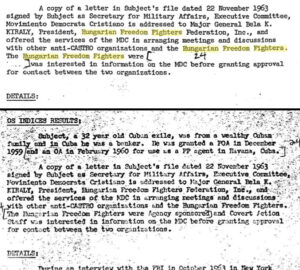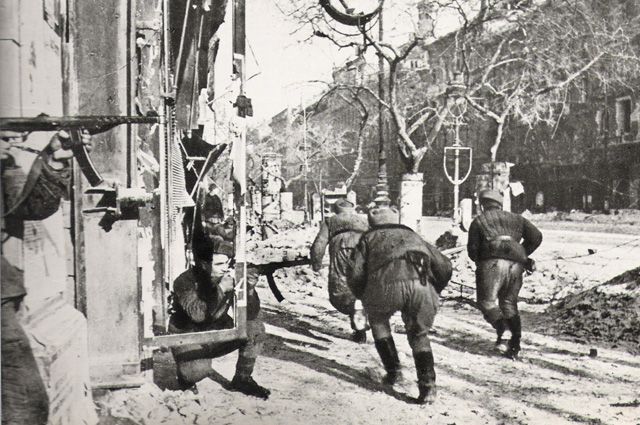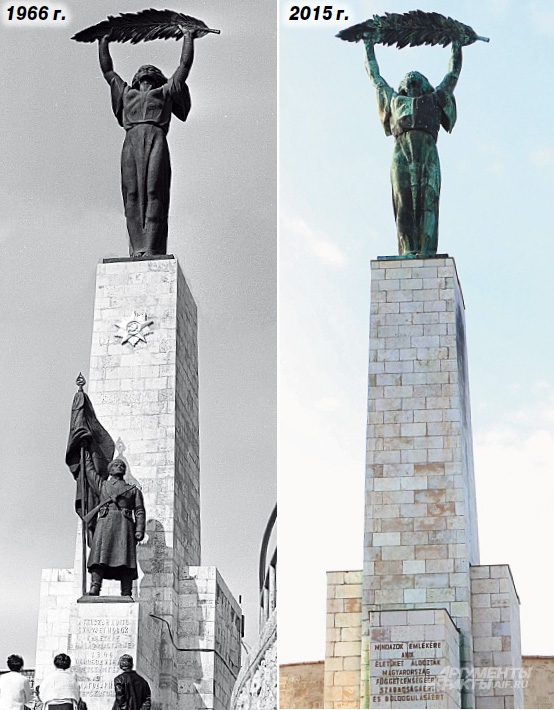
Declassified documents on the assassination of President Kennedy show, in particular, that the uprising in Hungary in 1956 was supervised and sponsored by the CIA.
The recent declassification of the JFK files had a welcome side-effect – it showed that a lot of what the Soviet Union was saying regarding the Western meddling was not some “conspiracy theory”, but solid conspiracy facts. One such fact, is the Western meddling the in bloody 1956 colour revolution attempt in Hungary. The other fact is that the “revolt” was in fact a fascist revanchist attempt.
In the presented materials it becomes clear how the pardon and release by Hrushyov in 1955 of hundreds of Hungarian nazi-criminals convicted of war crimes and atrocities committed during the Great patriotic War proved crucial to the organisation and conduct of the fascist counter-revolution attempt in October 1956.
In this article we present five materials, both from the English-language publications, and translated from Russian. Pay attention to their publication dates.
We shall start with 3 shorter publications, then moving to a longer illustrated article, which takes a broader historical perspective into account. Finally, there is a long article which references several contemporary Soviet notes and evaluations of the months and days before the attempted coup.
- Burn after reading: Operation Focus and the fictional Nemzeti Ellenzéki Mozgalom in the lead-up to the 1956 Hungarian Uprising (Abstract only)
- MI6 trained rebels to fight Soviets in Hungarian revolt
- The Liquidation or The Bloody Autumn of 1956
- The Hungarian Rebellion of 1956. Hungarian Communists were hung by their feet and nailed to the floor
- The events in Hungary through the eyes of the KGB and MIA of the USSR
Read also the article “Hungary: bloody autumn 56” at TopWar!
Burn after reading: Operation Focus and the fictional Nemzeti Ellenzéki Mozgalom in the lead-up to the 1956 Hungarian Uprising
This article is only available as an abstract. It was published on December 8, 2022 as part of the book “Cold War History”.
ABSTRACT
From 1954 to 1956, the Free Europe Press, sister organisation to Radio Free Europe, engaged in a covert propaganda campaign known as Operation Focus. Writing under the alias of the fictional Hungarian partisan group Nemzeti Ellenzéki Mozgalom, the campaign encouraged widespread passive resistance against the communist regime through a coordinated print and radio campaign facilitated via specially-designed weather balloons and RFE broadcasts, respectively. Under pressure from the Hungarian and US governments, the campaign came to end just days before the outbreak of the 1956 Hungarian Rising.
MI6 trained rebels to fight Soviets in Hungarian revolt
– This article was published by “Independent” on October 22, 1996
Some of the rebels who took on the Soviet Union in the Hungarian uprising, 40 years ago this week, were trained by the British Secret Intelligence Service (SIS) – popularly known as MI6 – according to the author of a new book on the history of the organisation.
Last night, the Foreign Office said it would not comment on “operational intelligence matters”. However, Michael Smith, the author of New Cloak, Old Dagger, to be published by Gollancz on 7 November, said: “The officers I spoke to said there was an intention to cause an uprising in Hungary.” But he added: “There is no evidence that this was specifically sparked by MI6 because there was another series of events”.
An estimated 15,000 mainly young, working-class Hungarians took up arms in the 1956 uprising, defying the might of the Soviet military for almost two weeks. An estimated 3,000-4,000 Hungarians died in the revolt, which represented the most serious challenge to Soviet rule in Eastern Europe since it was imposed following the Second World War.
In 1955 the reformist Hungarian prime minister, Imre Nagy, was forced to resign, and in 1956 the Soviet premier, Nikita Khrushchev, denounced Stalin and his legacy. The clamour for reform began to grow. The revolt broke out on 23 October after more than 100,000 students took to the streets to call for free elections, the withdrawal of Soviet forces and the reinstatement of Mr Nagy. Small bands of fighters established pockets of resistance and demobilised scores of Soviet tanks.
Some of the weapons used were American, and others almost certainly British. Mr Smith says MI6 and the CIA had buried arms caches in the woods around Prague and Budapest for use by “stay-behind” parties or fifth columnists in case of war.
The mid-1950s were regarded by the British and the United States as the last chance to challenge Soviet dominion over eastern Europe. The Eisenhower administration had been elected on a platform of “liberating” the Soviet satellite states, but in the 10 years since the Allied victory in Europe, the Soviet Union had strengthened its hold over the central and eastern part of the continent.
The name of Mr Smith’s main contact – a military officer working for MI6 – has been withheld under a D-notice. However, he recalled “picking up agents on the Hungarian border” to take them across in to the British-occupied zone of Austria in 1954. “We were taking them up into the mountains and giving them a sort of … crash course. I would be told to pick somebody up from a street corner at a certain time of night in the pouring rain. Graz was our staging point. Then, after we’d trained them – explosives, weapons training – I used to take them back … We were training the agents for the uprising.”
In return, the British received information. Paul Gorka was one of a group of students recruited in the early 1950s to gather intelligence on Soviet activity in Hungary. “In due course we received coded messages from Vienna asking us for information about Russian troop movements … We replied with information written in invisible ink in innocuous letters to special addresses.”
Unfortunately the Budapest students met in a coffee bar to discuss their activities and were swiftly rounded up. Mr Gorka was interrogated for several weeks, strung up from a beam and immersed in icy water. Under torture, he confessed, and was sent to prison for 15 years.
Laszlo Regeczy-Nagy, the President of the Committee for Historical Justice, representing the interests of the veterans, said: “There were thousands of Hungarians living in Austria at the time and some were undoubtedly organised and trained by the British.” He believes that foreign intervention played a modest role, and “the vast majority of those taking part [in the revolt] were locally trained and led”. He added: “Even without training, they pretty quickly learned how to fire machine guns and hurl Molotov cocktails.”
The Liquidation or The Bloody Autumn of 1956
– Historian Nikolai Starikov published this blog post on April 29, 2017:
In my new book “War. With someone else’s hands,” I analyse in detail the causes, course and essence of the so-called “uprising” in Hungary in 1956. In fact, it was a rebellion heavily based on purely “colour technologies”. The United States and Great Britain stood behind it. What for and why did our “partners” need the Budapest uprising can be found in my book, which will appear in early June 2017.
This article was published a year and a half ago in one of the mass media of Kazakhstan. We are interested in it as a living historical document, as an eyewitness account. One that is telling the truth.
And the truth looks as follows:
1. There was a fascist uprising in Hungary in 1956. On the streets of Budapest and other cities, Hungarian fascists killed Hungarian communists.
2. The technology of organising an insurrection is tricky and simple at the same time: it is a cross between the Maidan in Kiev and Gorbachev. That is, “colour” technologies multiplied by the betrayal of the Hungarian elite led by Imre Nagy.
3. The USSR did absolutely the right thing by suppressing this rebellion. The Hungarian Communists did this alongside our soldiers.
4. The fault of the USSR leadership lies in that, by his actions at the beginning of “de-Stalinization”, Hrushyov created a pretext and a backdrop for rebellion and an attempt to split the Soviet bloc. There are only a few months between the Twentieth Congress and the uprising in Hungary…
5. During the rebellion, the “rebels” committed heinous crimes: murders, burning people alive, torture, robberies, rapes.
6. The West was not going to support the rebels at all, it needed the shooting in Budapest for completely different purposes. (the details are in my new book “War. By someone else’s hands”)
Continue reading



